Region
Crash of a BAe ATP on São Jorge Island: 35 killed
Date & Time:
Dec 10, 1999 at 1018 LT
Registration:
CS-TGM
Survivors:
No
Schedule:
Ponta Delgada - Horta
MSN:
2030
YOM:
1990
Flight number:
SP530
Crew on board:
4
Crew fatalities:
Pax on board:
31
Pax fatalities:
Other fatalities:
Total fatalities:
35
Captain / Total hours on type:
2652.00
Copilot / Total hours on type:
514
Aircraft flight hours:
11305
Aircraft flight cycles:
23584
Circumstances:
The aircraft departed Ponta Delgada Airport at 0930LT on a schedule flight to Horta, carrying 31 passengers and a crew of four. The weather en route was affected by a frontal system with scattered cumulonimbus, heavy showers, turbulence and strong winds from the southwest. The crew decided to alter their flight plan, opting for a route that included approach descent over the channel between Pico and São Jorge islands to intercept the 250 degree VOR/VFL Horta radial. Horta tower initially cleared the flight to FL100. The crew then requested and were cleared to descent to 5,000 feet with the instruction of maintaining visual contact with Pico Island. During the descent heavy rain and turbulence were encountered. Seven minutes after initiating the descent, while in IMC conditions, the airplane impacted the northern hillside of Pico da Esperança (1067 metres high) located on São Jorge Island. It was later reported that the GPWS alarm sounded 17 seconds before impact. The aircraft disintegrated on impact and all 35 occupants were killed.
Probable cause:
Controlled flight into terrain after the crew failed to maintain the proper altitude. The following factors were identified:
- Inaccurate navigation configuration on part of the crew,
- The crew failed to properly use the weather radar,
- The crew failed to pay sufficient attention to the radio altimeter settings,
- The aircraft was not equipped with a modern and autonomous navigation system which may allow the crew to know their position with more precision,
- Lack of visibility due to poor weather conditions.
- Inaccurate navigation configuration on part of the crew,
- The crew failed to properly use the weather radar,
- The crew failed to pay sufficient attention to the radio altimeter settings,
- The aircraft was not equipped with a modern and autonomous navigation system which may allow the crew to know their position with more precision,
- Lack of visibility due to poor weather conditions.
Final Report:
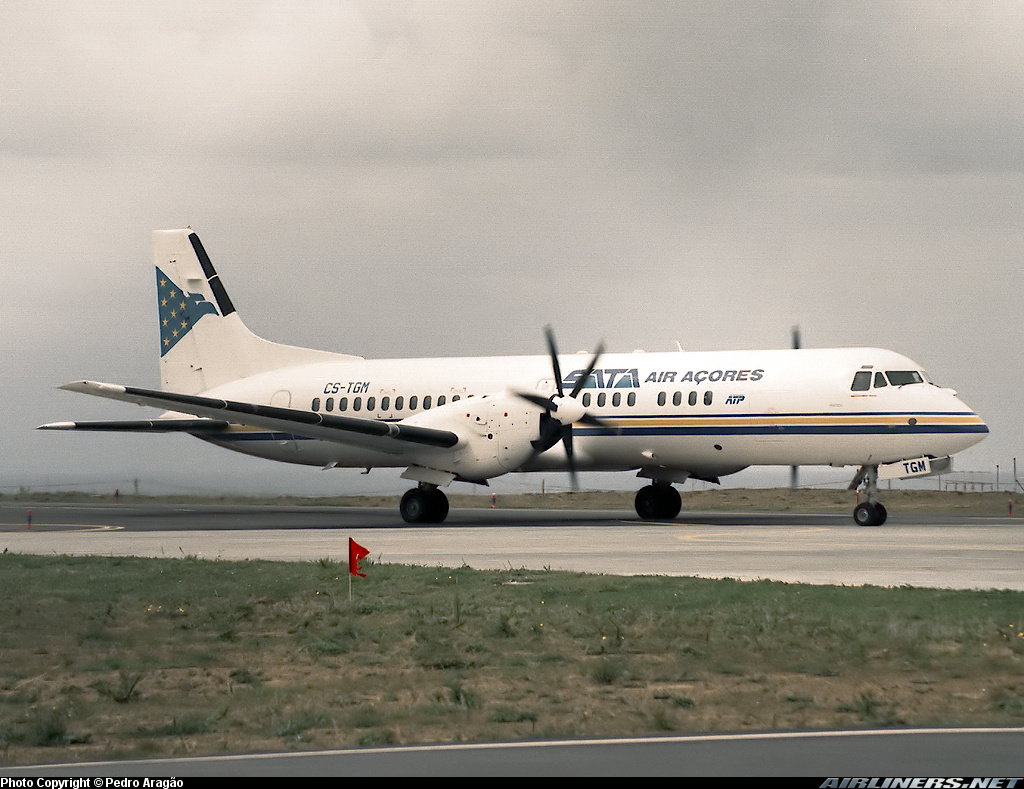
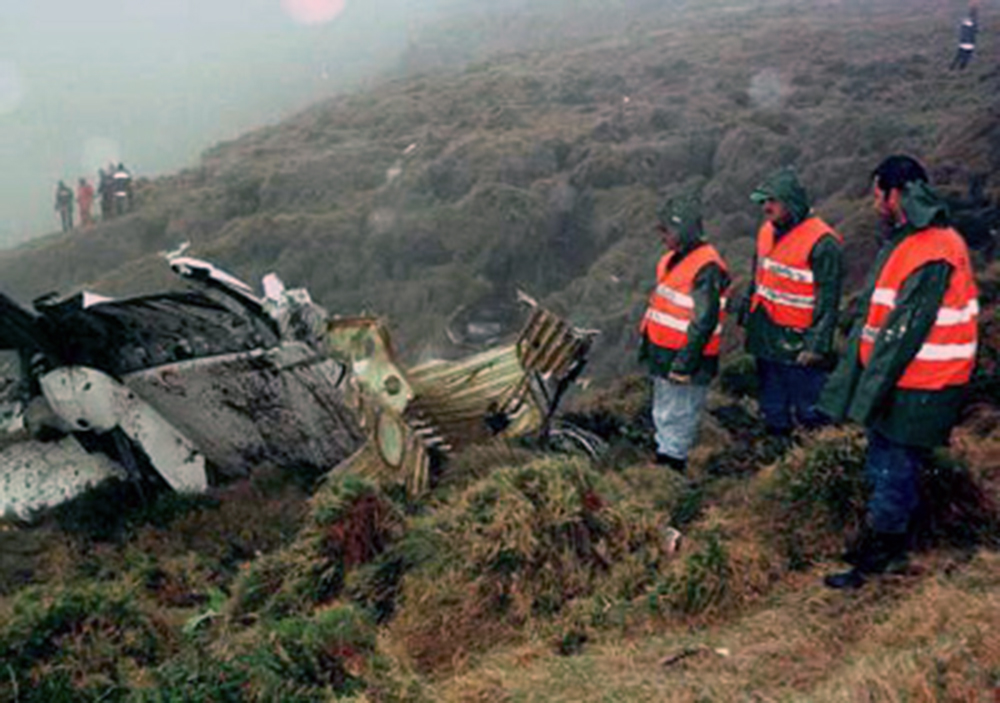
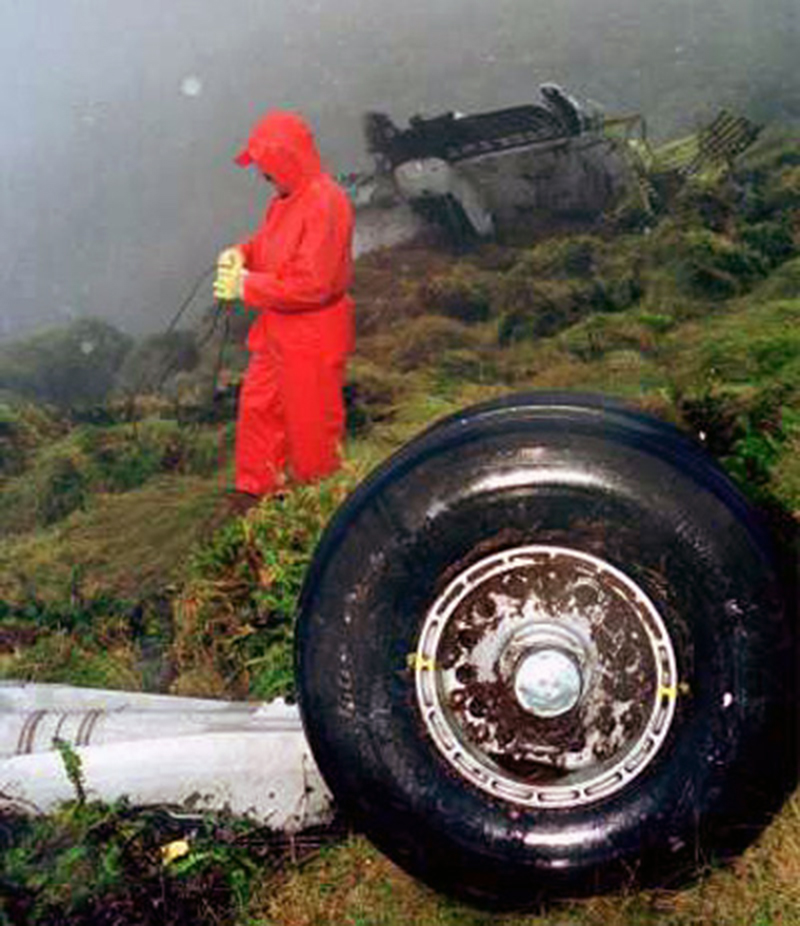
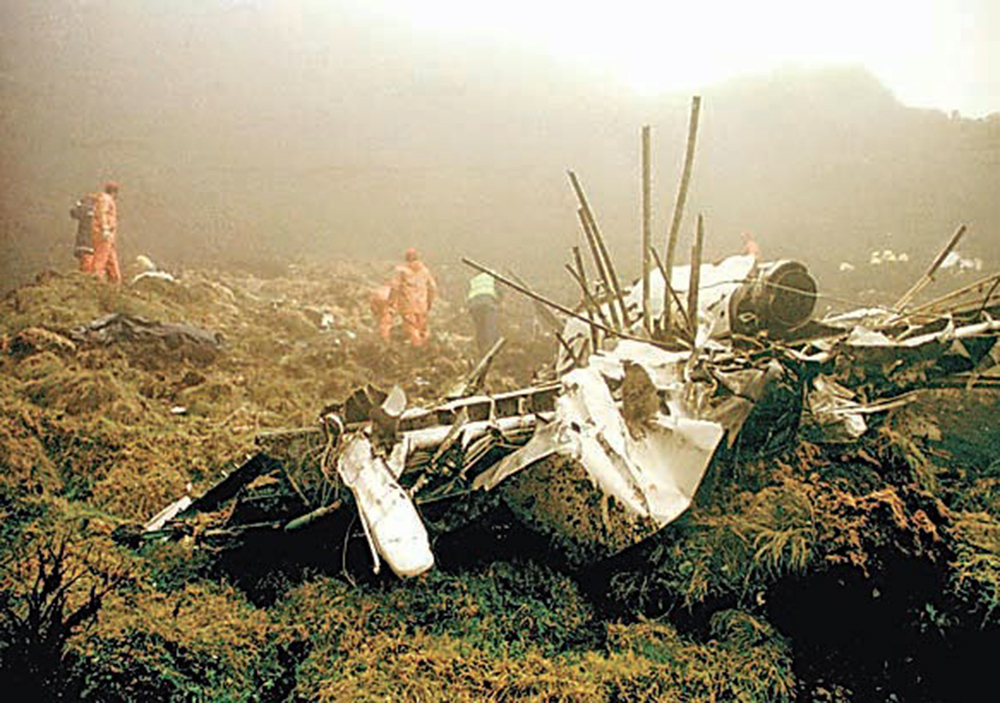
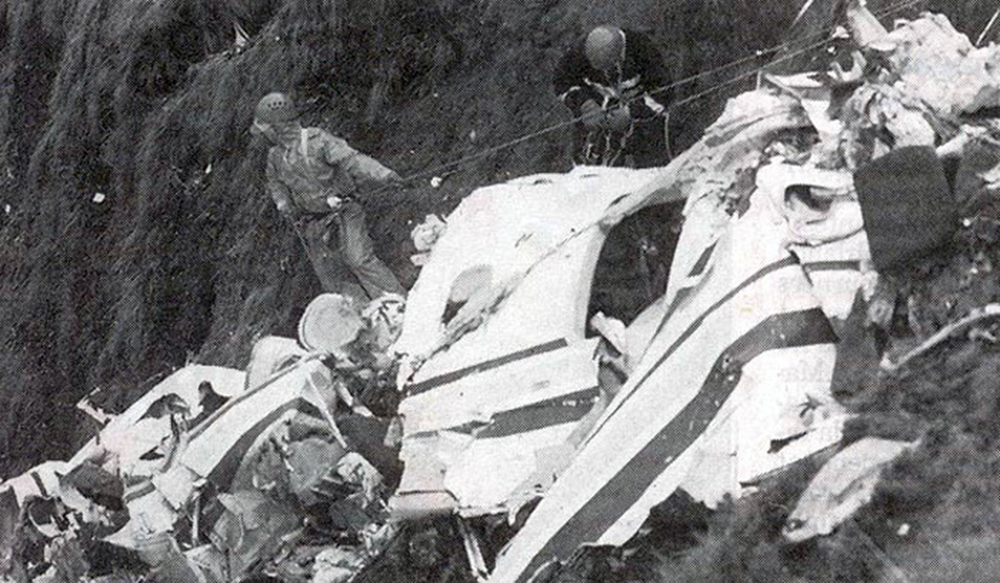
Crash of an Antonov AN-12BP in Lajes: 7 killed
Date & Time:
Feb 4, 1998 at 2217 LT
Registration:
LZ-SFG
Survivors:
No
Schedule:
Lisbon – Ponta Delgada – Lajes – Lisbon
MSN:
3 3 416 05
YOM:
1963
Flight number:
LXR513
Crew on board:
7
Crew fatalities:
Pax on board:
0
Pax fatalities:
Other fatalities:
Total fatalities:
7
Captain / Total hours on type:
3104.00
Copilot / Total hours on type:
1772
Aircraft flight hours:
12492
Aircraft flight cycles:
7005
Circumstances:
The four engine aircraft was completing a mail flight from Lisbon to Ponta Delgada and Lajes and back to Lisbon. On the last leg from Lajes to Lisbon, the cargo consisted of 1,693,5 kg of cargo and mail. Shortly after takeoff from runway 33, while in initial climb, the engine n°3 failed and its propeller autofeathered. Six seconds later, the engine n°4 failed as well. The aircraft went out of control and crashed in hilly terrain not far from the airport. The aircraft was destroyed and all seven occupants were killed.
Probable cause:
The following factors were identified:
- Engines n°3 and 4 stoppage at takeoff due to incorrect selection of the Fuel System,
- Interruption of the checklist sequence in the attempt to transfer fuel from the lower tanks to the wings, which may have contributed to the incorrect selection of the Fuel System,
- The cargo was not secured may have contributed to the deterioration of the stability and controllability of the aircraft,
- The impossibility to retract the landing gear, in time, which contributed to the decrease of the aircraft performance.
- Engines n°3 and 4 stoppage at takeoff due to incorrect selection of the Fuel System,
- Interruption of the checklist sequence in the attempt to transfer fuel from the lower tanks to the wings, which may have contributed to the incorrect selection of the Fuel System,
- The cargo was not secured may have contributed to the deterioration of the stability and controllability of the aircraft,
- The impossibility to retract the landing gear, in time, which contributed to the decrease of the aircraft performance.
Final Report:
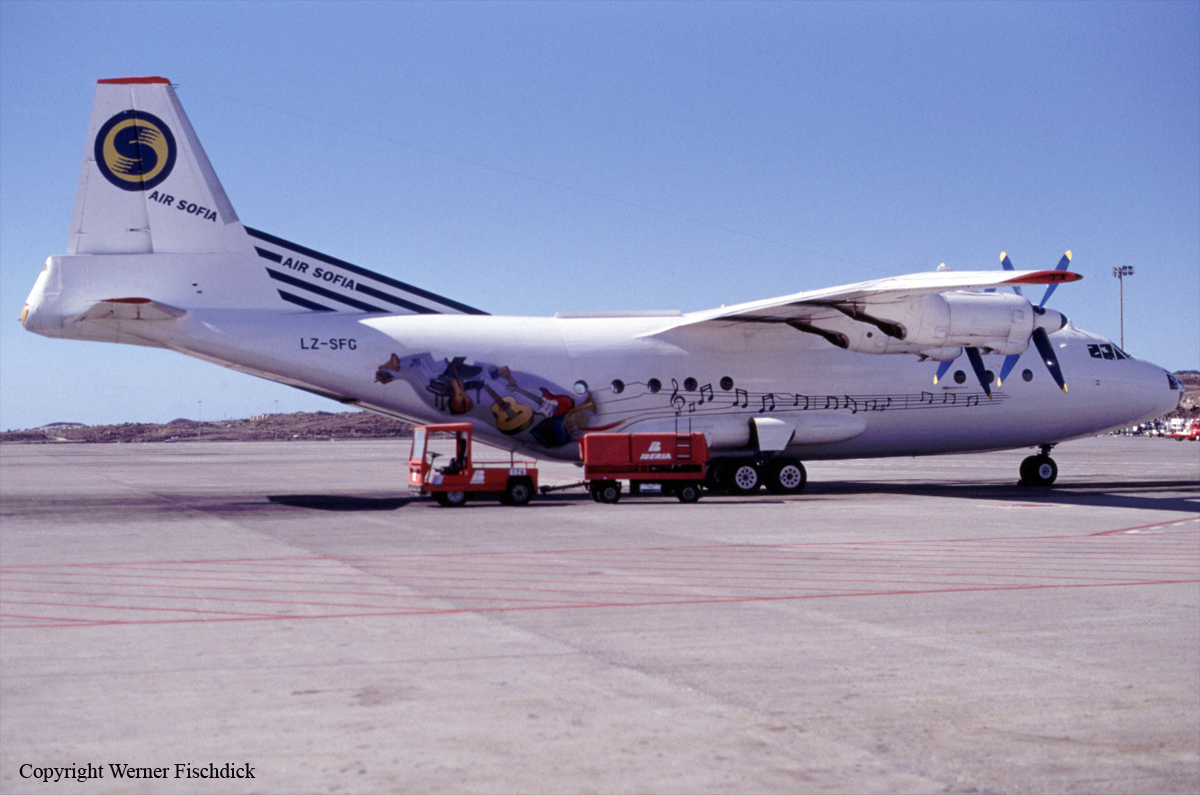
Crash of a Saab 340B in Porto
Date & Time:
May 14, 1997 at 1628 LT
Registration:
EC-GFM
Survivors:
Yes
Schedule:
Madrid - Porto
MSN:
315
YOM:
1992
Flight number:
RGN1335
Crew on board:
3
Crew fatalities:
Pax on board:
34
Pax fatalities:
Other fatalities:
Total fatalities:
0
Captain / Total hours on type:
1292.00
Copilot / Total hours on type:
904
Aircraft flight hours:
7226
Aircraft flight cycles:
7216
Circumstances:
Because of construction works on runway 35, the threshold at Porto was displaced by 760 metres. This was published in a Notam but during the flight preparation at Madrid-Barajas Airport, the crew was not informed about this notice. Following an uneventful flight, the crew was cleared to descent and received instructions for a landing on runway 35 but no information about the displaced threshold. On final approach, the controller realized that the aircraft was approaching too low and instructed the crew to 'overshoot please'. The crew did not react to this instruction and continued the approach when the aircraft undershot the displaced threshold and landed in the construction area. It struck several trenches which caused the undercarriage to be torn off and slid for few dozen metres before coming to rest on the runway. All 37 occupants were evacuated safely and the aircraft was damaged beyond repair.
Probable cause:
The following factors were identified:
- While preparing the flight in Madrid, the crew have not been informed about the Notam published by the Porto Airport Authority reporting that the runway 35 threshold has been temporary displaced of 760 metres due to construction works,
- The existence of two markings on the runway 35 threshold, which may have confused the crew,
- Lack of concentration of the crew during the flight,
- The controller did not effectively alert the crew about work in progress,
- The controller, trying to alert the crew, did not use a correct phraseology.
- While preparing the flight in Madrid, the crew have not been informed about the Notam published by the Porto Airport Authority reporting that the runway 35 threshold has been temporary displaced of 760 metres due to construction works,
- The existence of two markings on the runway 35 threshold, which may have confused the crew,
- Lack of concentration of the crew during the flight,
- The controller did not effectively alert the crew about work in progress,
- The controller, trying to alert the crew, did not use a correct phraseology.
Final Report:
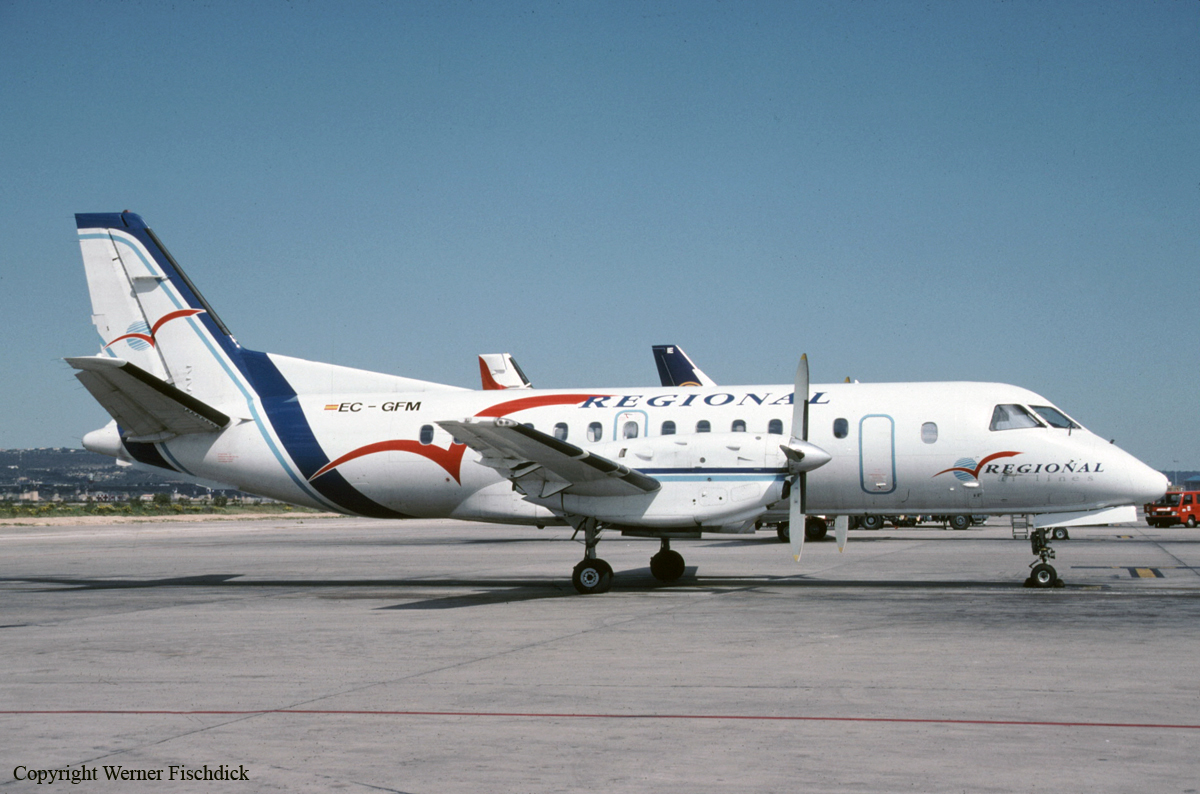


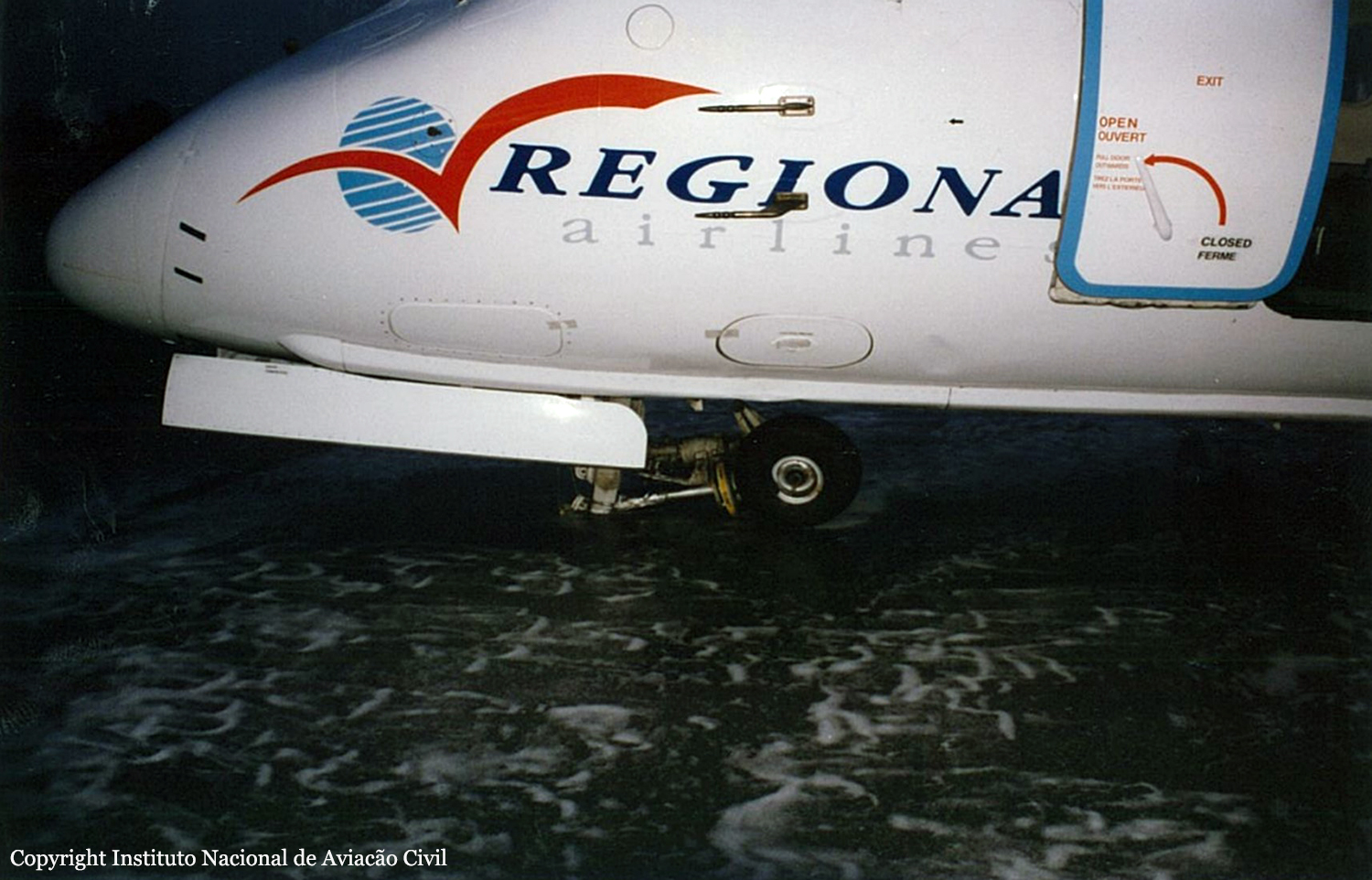
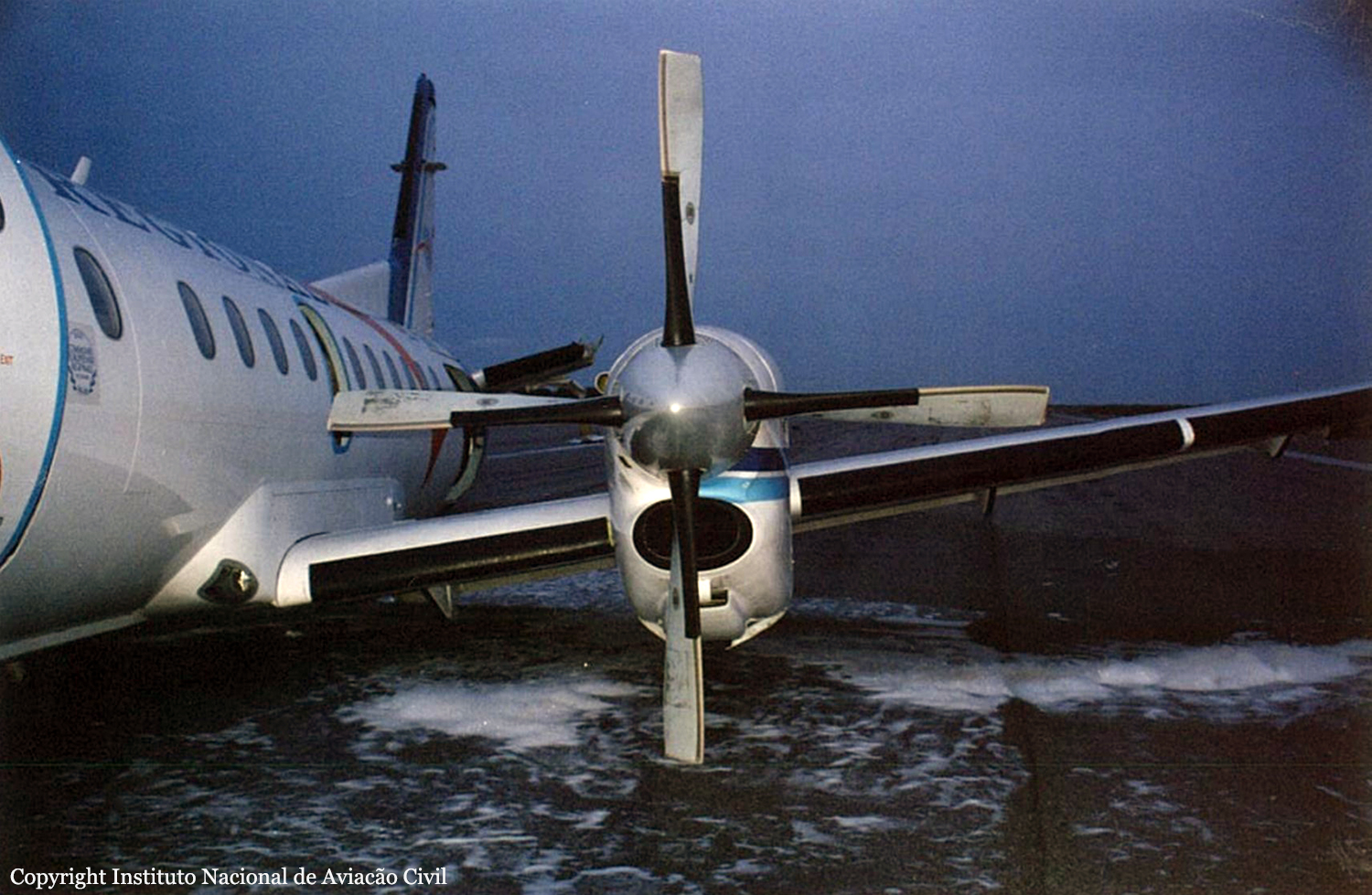
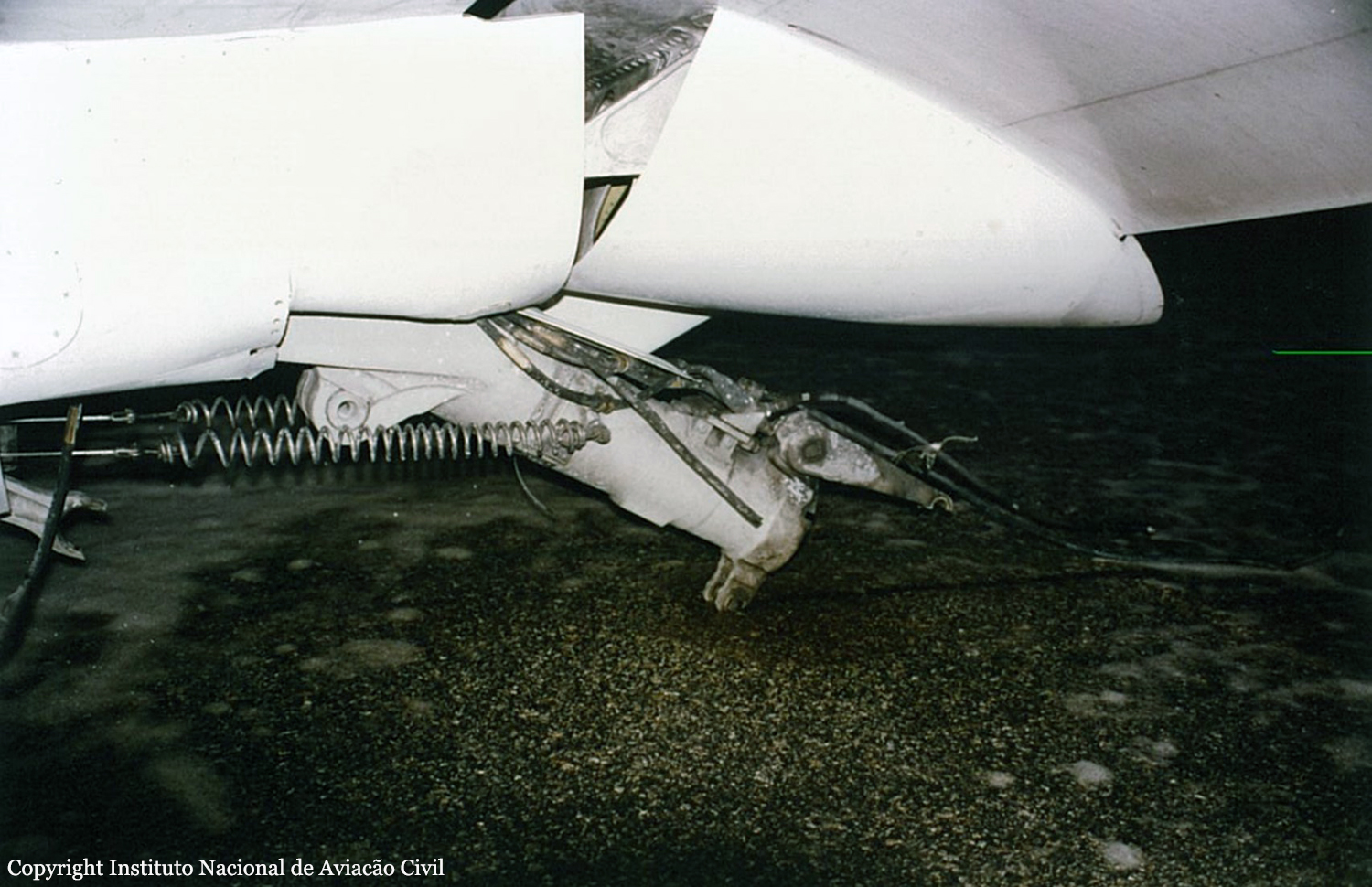
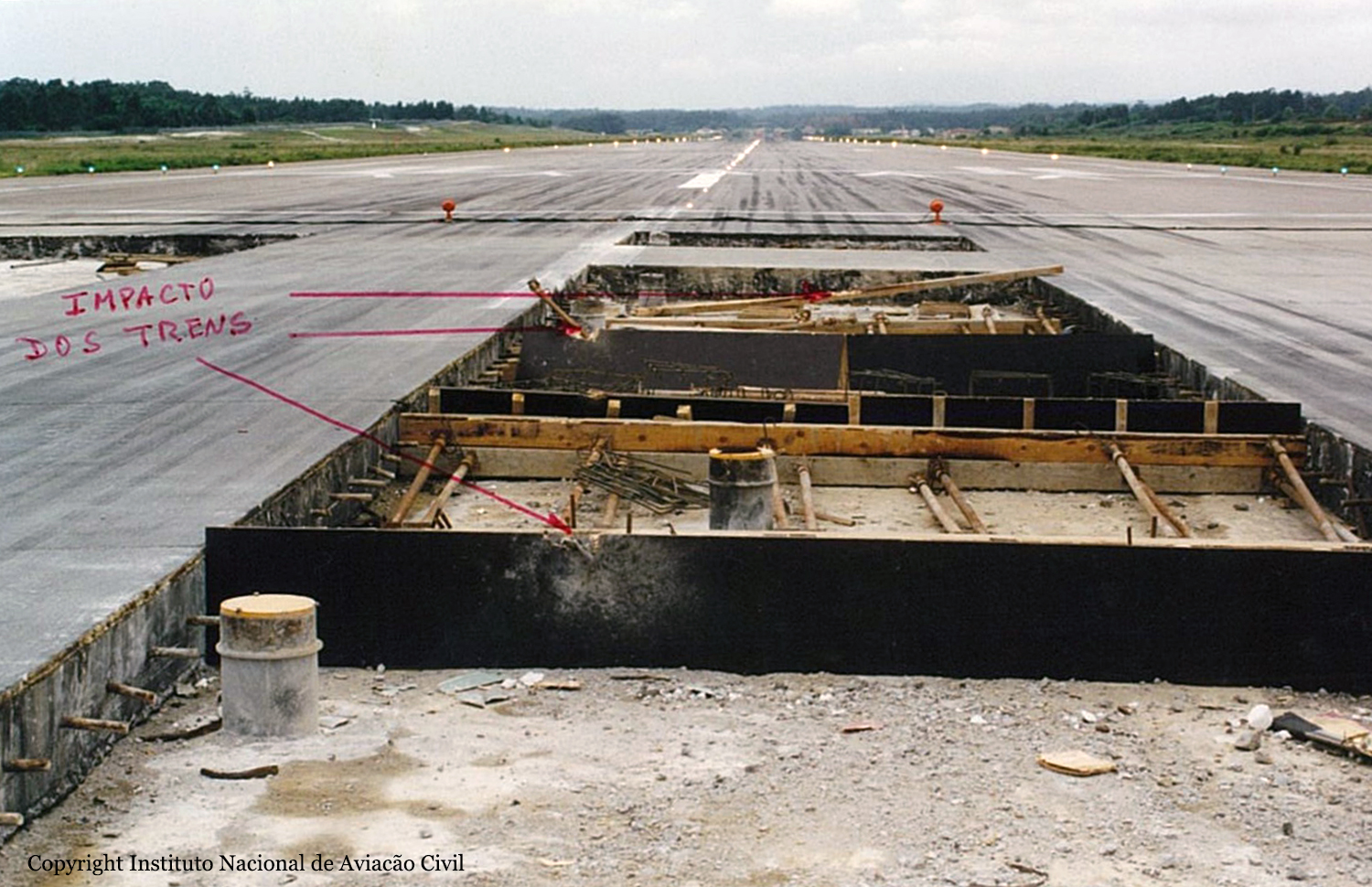
Crash of a Transall C-160D off Ponta Delgada: 7 killed
Date & Time:
Oct 22, 1995
Registration:
50+43
Survivors:
No
Schedule:
Ponta Delgada - Saint John's
MSN:
D65
YOM:
1969
Crew on board:
7
Crew fatalities:
Pax on board:
0
Pax fatalities:
Other fatalities:
Total fatalities:
7
Circumstances:
After takeoff from Ponta Delgada-Nordela Airport, the aircraft encountered difficulties to gain height. It collided with power lines, stalled and crashed in the sea few dozen metres offshore. All seven crew members were killed.
Probable cause:
It was reported that one of the engine failed after Vr but before rotation. It was apparently too late for the crew to abort the takeoff procedure. Due to insufficient power, the aircraft was unable to gain height.
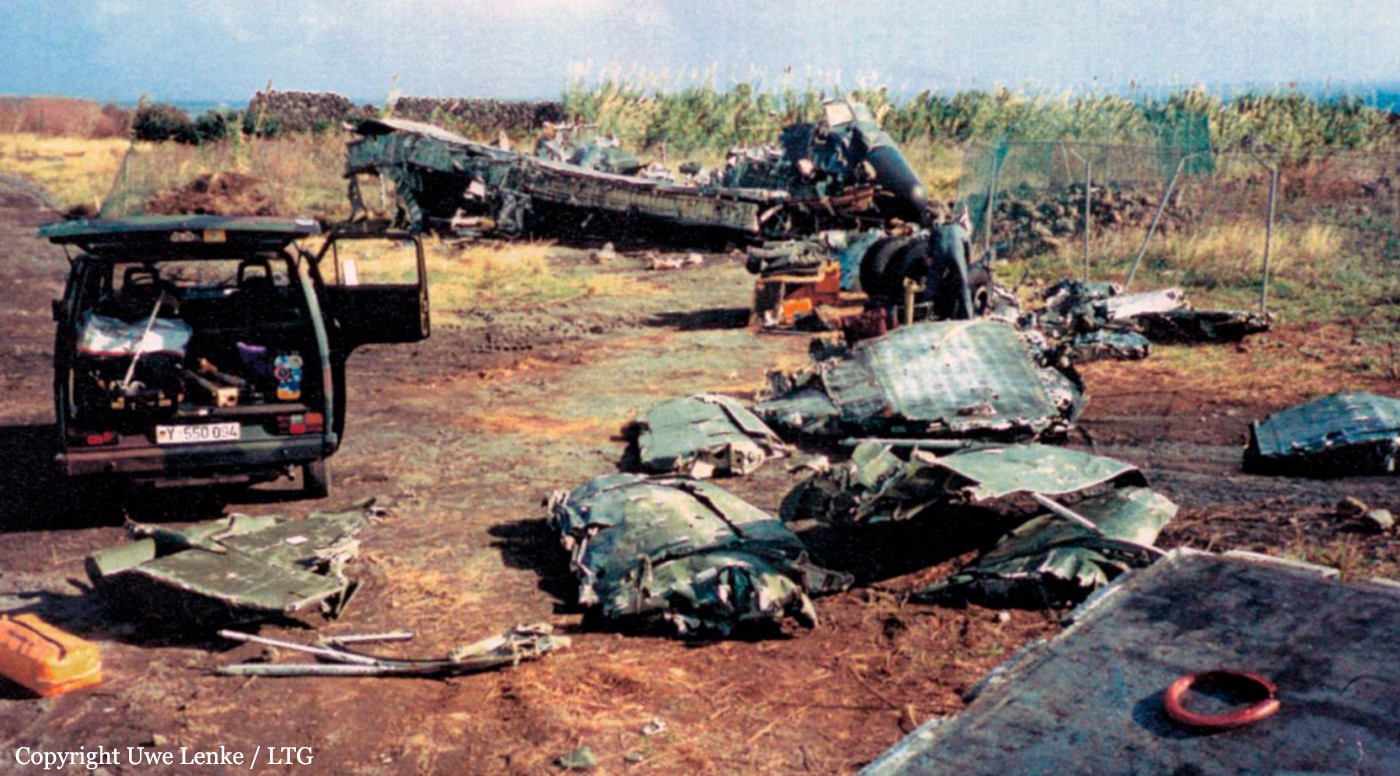
Crash of a Britten-Norman BN-2A-8 Islander in Bragança
Date & Time:
May 8, 1994 at 1200 LT
Registration:
CS-DAF
Survivors:
Yes
Schedule:
Lisbon - Bragança
MSN:
691
YOM:
1973
Crew on board:
2
Crew fatalities:
Pax on board:
2
Pax fatalities:
Other fatalities:
Total fatalities:
0
Circumstances:
En route from Lisbon to Bragança, while cruising at an altitude of 8,000 feet over clouds, the right engine suffered vibration. Few minutes later, the crew decided to shut it down and its propeller was feathered. As the crew was unable to maintain a safe altitude on one engine, he decided to descend and to attempt an emergency landing on a road. On final, the aircraft struck trees and crashed. All four occupants were slightly injured.




